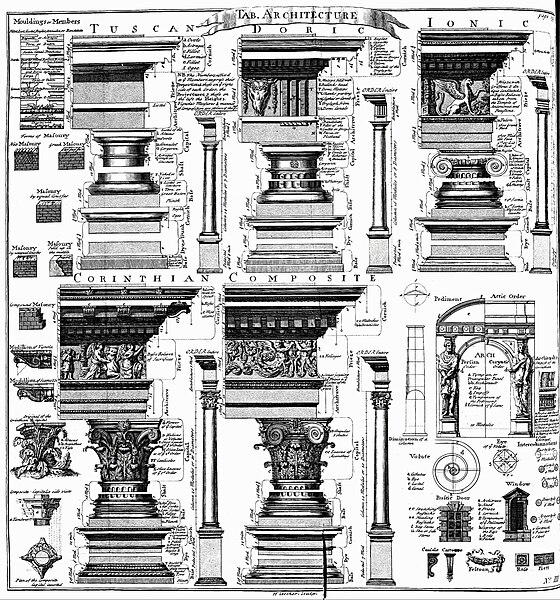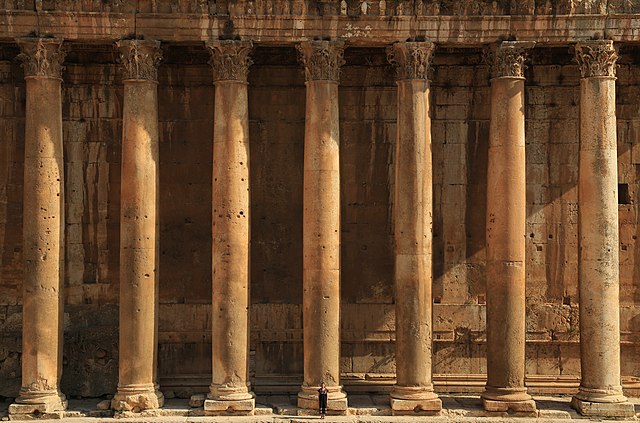The Corinthian order is the last developed and most ornate of the three principal classical orders of Ancient Greek architecture and Roman architecture. The other two are the Doric order, which was the earliest, followed by the Ionic order. In Ancient Greek architecture, the Corinthian order follows the Ionic in almost all respects, other than the capitals of the columns, though this changed in Roman architecture.
Corinthian peripteros of the Temple of Bacchus, Baalbek, Lebanon, unknown architect, 150–250
Corinthian columns from the Pantheon, Rome, unknown architect, c. 114–124 AD, which provided a prominent model for Renaissance and later architects
Frieze and capitals of the Choragic Monument of Lysicrates, Athens, unknown architect, 330s BC, one of the earliest surviving examples
Bucrania with festoons decorating the Temple of Vesta from Hadrian's Villa, Tivoli
An order in architecture is a certain assemblage of parts subject to uniform established proportions, regulated by the office that each part has to perform.
Coming down to the present from Ancient Greek and Ancient Roman civilization, the architectural orders are the styles of classical architecture, each distinguished by its proportions and characteristic profiles and details, and most readily recognizable by the type of column employed. The three orders of architecture—the Doric, Ionic, and Corinthian—originated in Greece. To these the Romans added, in practice if not in name, the Tuscan, which they made simpler than Doric, and the Composite, which was more ornamental than the Corinthian. The architectural order of a classical building is akin to the mode or key of classical music; the grammar or rhetoric of a written composition. It is established by certain modules like the intervals of music, and it raises certain expectations in an audience attuned to its language.

Illustrations of the Classical orders (from left to right): Tuscan, Doric, Ionic, Corinthian and Composite, made in 1728, from Cyclopædia
Greek orders with full height
Doric capital of the Parthenon from Athens
Ionic capital from the Queen Elizabeth II Great Court of the British Museum (London)








